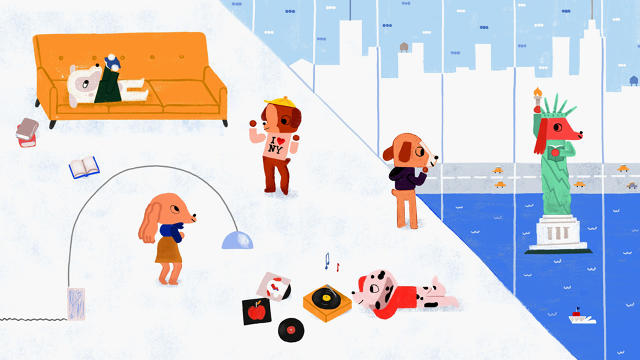Nine out of 10 people who buy a puppy from a store or online are getting one whose earliest days were spent in a puppy mill. They might not know that, though—the puppy they get will be cute, and happy to see them, and it might come with a fake certificate or a deceptive photo of the dog frolicking in the grass. Beyond that, drawing attention to the real issue of puppy mills—where puppies are bred in intensive, inhumane conditions—can be a challenge, just because it’s so depressing. Dogs are our best friends. Who wants to spend too much time thinking about the conditions under which they’re often bred?
The new campaign from the Humane Society of the United States has a novel take on that, though. Working with the agency Rokkan, the nonprofit organization launched a new campaign today called “Don’t Buy Into Puppy Mills.” But rather than drive home how rough puppy mills can be by showing you repeated images of those conditions, the campaign instead asked kids where they think puppies come from—and animated the results.
Rokkan CEO John Noe saw the challenge inherent in overcoming the paralyzing effect of highlighting something as grim as puppy mills as the agency developed the campaign. “The big fight is how pervasive puppy mills are, and how that becomes a shock to the system when people realize that,” he says. “So our big task is shedding light on these staggering statistics in a way that helps people react not with guilt and shock, but with compassion.”
To get there, they created a two-and-a-half minute short that lets a cute group of little kids imagine where puppies come from—New York City (duh), where they live in a puppy condo together, or a planet full of puppies—and illustrates those musings in a breezy, whimsical style. And in the full-length video, it spends time letting the viewer enjoy that childlike speculation before getting real.

“That [challenge] led us to the idea of working with kids to imagine where puppies actually come from,” Rokkan chief creative officer Brian Carley says. “The reality of it is so absurd and horrible that it pales in comparison to the ridiculous theories that these kids came up with. We wanted to contrast those two, because a lot of people don’t know the reality of what happens. That’s where the genesis of the idea comes from.”
The campaign does an interesting job of highlighting that absurdity—it’s not a far stretch to go from animating a bunch of puppies playing together in a condo to animating puppies caged in close-cramped quarters in a puppy mill, and the fact that one is tragically real and one is whimsically imaginative doesn’t make the shared weirdness of puppies coming from these very un-puppy-like places any less apparent.

A lot of what the Humane Society does is promote pet adoption, and work legislatively, by sharing the stories of puppies and dogs who’ve been saved by their work. Those campaigns can be heartwarming (or tear-jerking) and they’re very effective at inspiring people to find ways to help take care of an animal who might need it. But when it comes to actually drawing attention directly to a problem, and encouraging people to make the consumer choices necessary to specifically address it—namely, don’t buy a dog from a store or online, adopt instead—it presents a unique opportunity for a campaign.
“The work we do with the Humane Society is to try to get them away from doing things that show images of sad puppies, or guilt people into feeling bad about it,” Carley says. “We want to add a little context and a moment of levity with all of this, and use some uplifting stories to show that we can change the story for dogs. We’re not going to make them come from a crazy planet or live in a doggy condo in New York City, but people can have an effect, and that’s awesome.”
Fast Company , Read Full Story
(30)